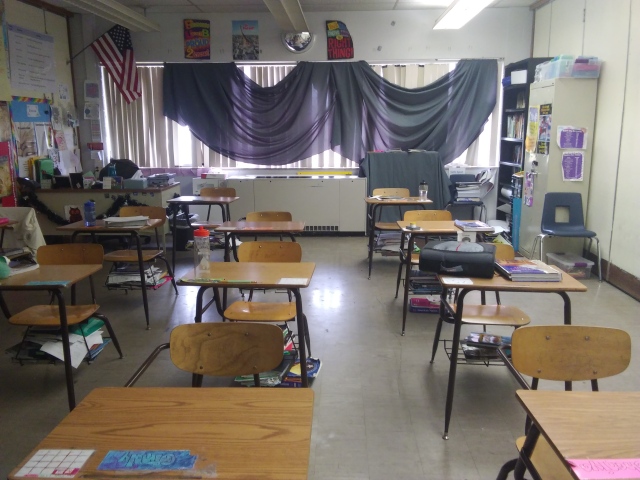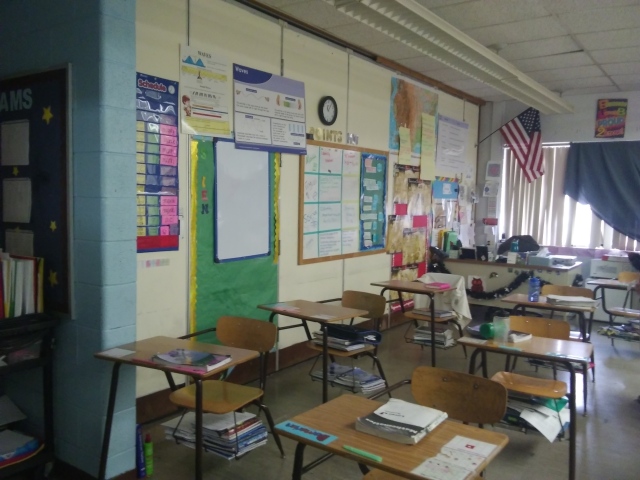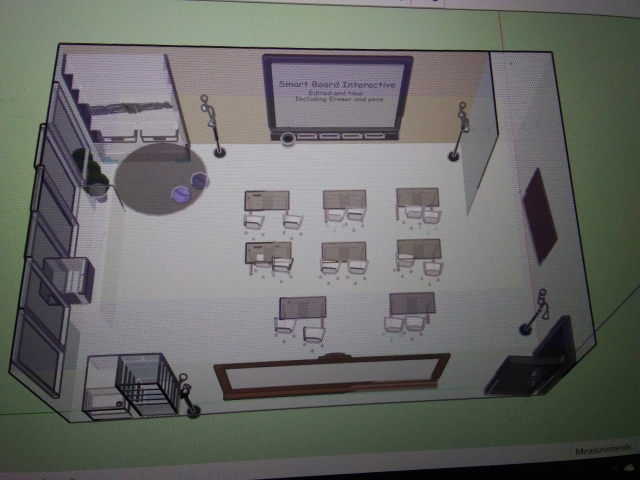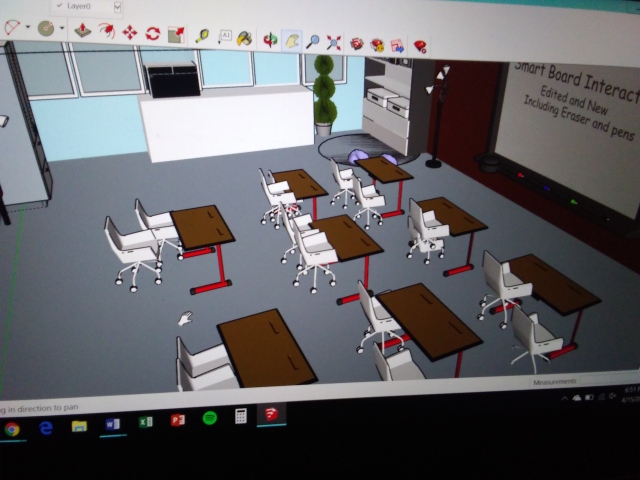My school is a charter school where the philosophy is that for the teaching part and assessment part, the desks should be in rows, all students facing towards the front. In the group practice part, we can move the desks wherever we need to. It can become quite frustrating when I am trying to conduct a lab, since we do not have a science lab room.

Due to the size of the room and desks, it is very difficult to rearrange a room to be a more learning centered environment. My school also has to deal with connecting walls, that do not open anymore. I know in P. Barrett et al., “Building and Environment” he stated that “air quality, temperature, and sound are important but did not rise to the top of the analysis… (2013, p.687)” I can safely say in my school, they do have an impact. Most of the time, sound from other classrooms is heard daily. The connecting walls let sound in quite a bit. Because of this, the only place the Smart board can go, is at the front of the room so I have to use my rectangle room width wise instead of length wise. Also, temperature control is an issue at our school. There is no air conditioner, so the fall and spring seasons are really warm. In the winter, more often than not a window is cracked open because the heat is too hot and if it is turned down, it quickly gets too cold.

Thinking about this, and how “the ‘average pupil’ in the worst class had a predicted weighted progress of -0.82…[and] placing this ‘average pupil’ in the best class would result in a weighted progress value of 1.1 (2013, p. 687)” gave me ideas in my (re)design of my classroom to add features such as a room air-conditioner. I also added a “thicker wall” on the left and right so that sound from other classrooms does not interfere as much. As for the “six parameters [that influence student growth] colour, choice, connection, complexity, flexibility, and light (2013, p. 687),” I decided not to use the overhead lights that we have, high fluorescent lights that tend to give me a headache, sometimes, by the end of the day. I chose to put four identical lamps with multiple movable lights that can light up the room with the proper LED light. I also chose to use partner tables, even though Colleen Lee (2014) stated that, “…the [partner] set up clearly still said ‘Focus on the teacher – and then shift to practicing with your partner’ (but remember who is in charge!)'” I had a plan. In the small rooms that we have, I thought that if the tables were easy to move, as were the chairs, then making small groups would take no time at all. The chairs that I chose have wheels, the idea from The Third Teacher (2010) that students should be able to move around to increase their ability to concentrate, but also has features that would allow them to adjust the chair to their proper height. This would give the students a choice on how to set up their own chair. Then, when group activities happen, moving the tables and chairs would go much easier than moving connected chairs and desks. I have also posted a display board to post exam scores and exemplary class work from any class so my students and I can track their progress (The Third Teacher, 2010).

The cost for the innovations I would want may be too much for our school. The tables, we may be able to find at a thrift shop or from what what we already have. The chairs are the biggest problem. On Amazon.com, the cheapest chairs come at about $20-$40 a piece, which is only for one classroom, the smallest size at that. Although the cost may inhibit many factors I want to incorporate, I know that these changes would positively benefit my students and create a learning centered environment that could increase their average growth as they make their way from eighth grade into high school.

References:
Barrett, P., Zhang, Y., Moffat, J., & Kobbacy, K. (2013). A holistic, multi-level analysis identifying the impact of classroom design on on pupils’ learning. Building and Environment, 59, 678-689. doi: http://dx.doi.org/10.1016/j.buildenv.2012.09.016
Lee, C. What Your Classroom Setup May be saying to Students. 2014. Retrieved from http://www.schoolleadership20.com/forum/topics/what-your-classroom-setup-may-be-saying-to-students-by-colleen-le
The Third Teacher. (2010). TTT Ideas Flash Cards. Retrieved from http://goo.gl/v25rRA

